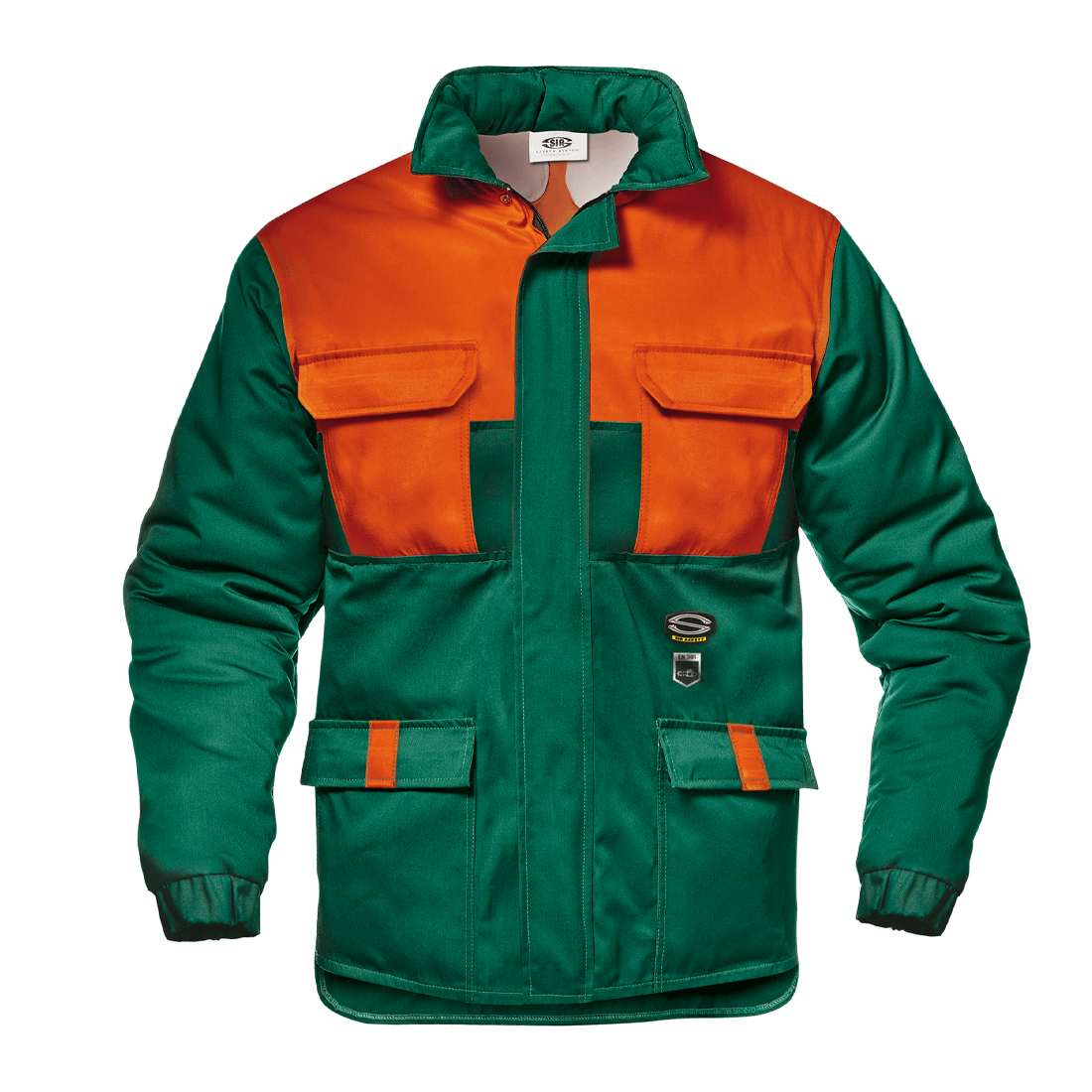The EN 381 standard specifies the minimum requirements for protective clothing for users of handheld chainsaws and protective gloves for the use of chainsaws.
The essential characteristic of this work clothing consists in resistance to chainsaw cutting. This is made possible by means of the obstruction principle applied by using synthetic fibres. In case of contact with the chain, these long, thin and highly resistant fibres are extracted from the fabric and wrap around the chainsaw, blocking it in a split second.
The standard is divided into several parts, each dedicated to a part of the body:
EN 381-1 Personal protective equipment (PPE) for users of handheld chainsaws.
EN 381-5 Leg protectors.
EN 381-7 Requirements for chainsaw protective gloves.
EN 381-9 Requirements for chainsaw protective gloves.
EN 381-11 Requirements for upper body protectors.
It prescribes 4 Classes, each corresponding to the speed of the chainsaw at which the abrasion resistance and force tests were conducted:
Class 0: up to 16 m/s
Class 1: up to 20 m/s
Class 2: up to 24 m/s
Class 3: up to 28 m/s
Not all the classes are necessarily used for each part in which the standard is divided.
In part 5, the standard specifies the requirements for leg protectors and defines three types of leg protective devices, according to the protection level applied:
A- Front protection: On the front of both legs, a 180° protector plus 5 cm on the inner part of the right leg and 5 cm on the outer part of the left leg.
B- Front and side protection: Similar to type A with an extra 5 cm of protection on the inner part of the left leg.
C- 360° protector- Full protection of the right and left leg.
Type A and type B protectors are in principle intended to be used for ordinary woodcutting forestry work following training. Type C protectors are intended to be used by people who do not normally work with a chainsaw, or in extraordinary situations.
Part 11 defines the requirements for jackets, or back protection. Protective jackets can be used when pruning with a chainsaw. The standard envisages the same classes as part 5.

